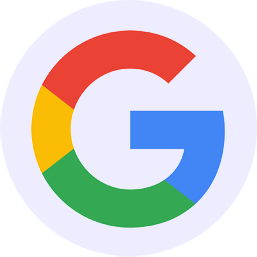Why understanding a brand is first and foremost in the creative process
 If there’s one thing that bothers me more than anything else in this era of social media quick takes, it’s the idea of throwing criticism around without need for further explaining one’s point of view.
If there’s one thing that bothers me more than anything else in this era of social media quick takes, it’s the idea of throwing criticism around without need for further explaining one’s point of view.
Snarky remarks, sarcastic barbs, and relentless scoffing are now the norm, and it’s impossible to qualify the remarks based on levels of expertise.
Nowhere have I seen this more than with the design industry.
Every new piece of tech, every logo or word mark, and every color and font choice are scrutinized. Whether it’s a new iPhone or a redesigned logo, everyone has an opinion, and that opinion must be heard.
When Google unveiled its new logo recently, I decided to give it its day in court. After all, knee-jerk reactions can oftentimes be poor indicators of quality. Google has so many properties under its umbrella, that I was interested in what the “top of the pyramid” would look like, and more importantly, why.
So I took a look at the company’s brand statement.
It’s interesting read from some talented designers, and it does an excellent job succinctly explaining the logo’s angles, and how they tie-in with existing marks for products like Google Drive, Google Play and Chrome.
Everything is well-thought-out, and doesn’t feel like the overarching word mark is trying to retrofit itself into an existing model. It feels integrated.
Still, the court of public opinion went on a rampage about the new mark. So many designers who I respect went on a tear, picking the logo apart.
When I suggested to one creative in particular that reading the brand statement (https://design.google.com/articles/evolving-the-google-identity/) was valuable here, I was met with a resounding “Ugh–I never want to read one of those again.”
“If a logo has to explain itself, hasn’t it failed already?”
It’s a fair question. And for a simple logo, it’s probably true. If a pizza shop opens, include a pizza in the logo. Have a new product? Call it out the logo, sure. But we aren’t talking about a logo; we’re talking about a brand.
There is a difference.
Look at it like this: You go into a kitchen and see a chef. You can tell from his or her attire that they are a chef, and you can probably learn a little about their station as a chef from their hat or badge, should one be there. You can probably also tell the type of food they specialize in by looking at the front of their smock.
But let’s say you meet an executive from a tech startup. If you know what to look for, you could probably extrapolate details from their attire. But that will only get you so far.
To get the flavor of who they are and what they do, you need to open a dialogue.
That is the difference between a logo and a brand: a logo is a visual representation of an entity; a brand is how that logo fits into the story. A brand is a conversation.
Altitude specializes in tech companies, startups, and existing enterprises that serve niche industries— sometimes very niche. We spend the time to do our homework. We open a dialogue with the client, and we make sure we understand the company’s product, their mantra, their culture, and we develop their brand from there.
In order for us to be able to visually present a company or product, we need to understand it first. In some cases, a brand statement is a necessity, even if no one reads it.
Sometimes, brand statements inform a verbal toolkit for selling. Sometimes, those statements serve as a blueprint for creating an overall style guide to be applied to all facets of the company’s visual identity. Sometimes, it’s just a way to get the creative past a board who don’t quite “get it.” Either way, the value is undeniable.
End of the day, logos are art. And art is subjective. Everyone has their opinion, and sometimes, those opinions are constructive, and serve to improve the process and keep the conversation moving forward. Though, sometimes, it’s just fun to make a snarky remark in the vacuum of the Internet.
But taking a peek at that artist’s intentions make you view that piece in a different light, and may cause you start a whole new conversation. A good brand does just that.

 If there’s one thing that bothers me more than anything else in this era of social media quick takes, it’s the idea of throwing criticism around without need for further explaining one’s point of view.
If there’s one thing that bothers me more than anything else in this era of social media quick takes, it’s the idea of throwing criticism around without need for further explaining one’s point of view.


